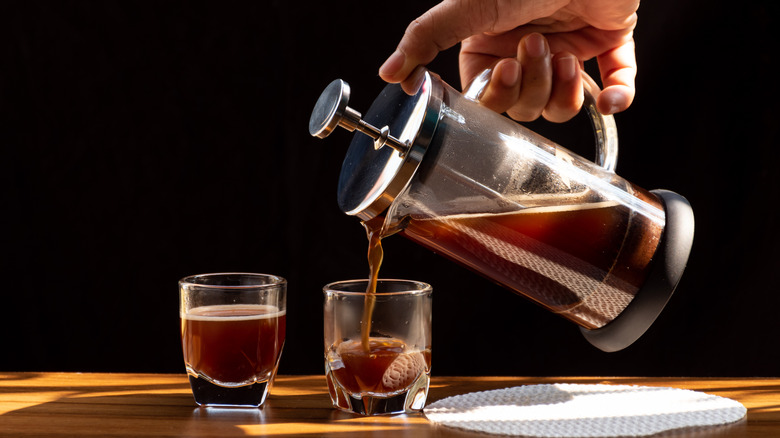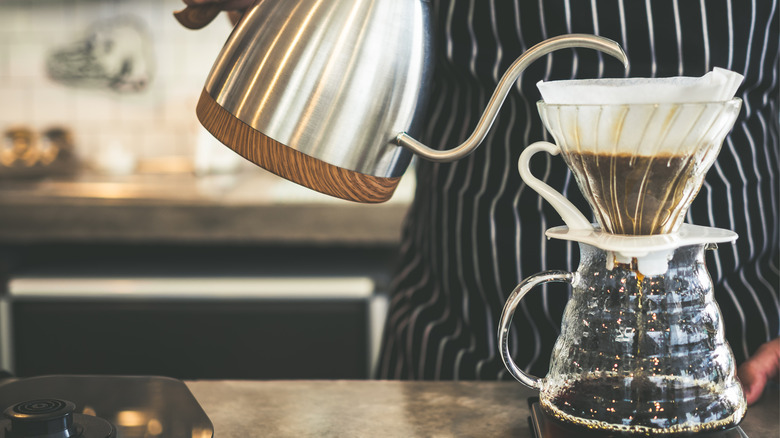The Real Difference Between Pour-Over Coffee And French Press Coffee
There is more than one way to brew a cup of coffee. In fact, there seem to be more at-home brewing systems than ever before. If you're looking to ditch the automatic drip coffee maker for something a little more hands-on, you may reach for a pour-over or French press to make your coffee. But what's the difference between the two?
The French press process is simple. Roasty Coffee explains it this way: A French press only involves a couple of parts, a vessel — called a carafe — of varying shapes and sizes, and a plunger to push down the coffee grounds at the right time. To make a cup of French-pressed coffee, you simply scoop coffee grounds into the carafe, pour in hot water, and let the mixture steep for a few minutes, says Real Good Coffee Co. To finish it off, press the plunger down and a mesh filter will push all the coffee grounds to the bottom of the carafe.
The French press is notorious for producing bold, dark, hearty cups of joe, notes Roasty Coffee, so if you enjoy your coffee nice and strong, this may be the best method for you. But the French press does allow for some customization in this regard, says Real Good Coffee Co., because the pourer can let the grounds steep for as short (for a lighter cup) or as long (if you're looking for a cup of mud) as they wish.
Pour-over produces a lighter bodied cup
The pour-over process is equally as simple, but the contraptions come in even more shapes and sizes. Pour-over coffee makers vary from popular carafes like the smooth-sided glass Chemex to ridged, cone-shaped vessels that can be plopped over a mug for a single-serve pour over the cup, notes Real Good Coffee Co. As the name suggests, to create a cup of coffee, hot water is slowly poured over ground coffee beans. The water slowly filters through the beans and into either a cup or a carafe, depending on the pour-over maker.
Roasty Coffee notes that the pour-over method causes water to move through the coffee grounds in a circular motion, which produces a lighter, smoother final cup than the French press would. Like the French press, a pour-over cup of coffee will be ready in minutes, but the process is fully active, requiring slowly pouring water over the grounds, compared to the passive brewing of letting the coffee sit in a carafe. So whether you choose a bold cup of French-pressed coffee or a more delicate cup from a pour-over contraption, you're in for a quick and simple caffeine fix.

